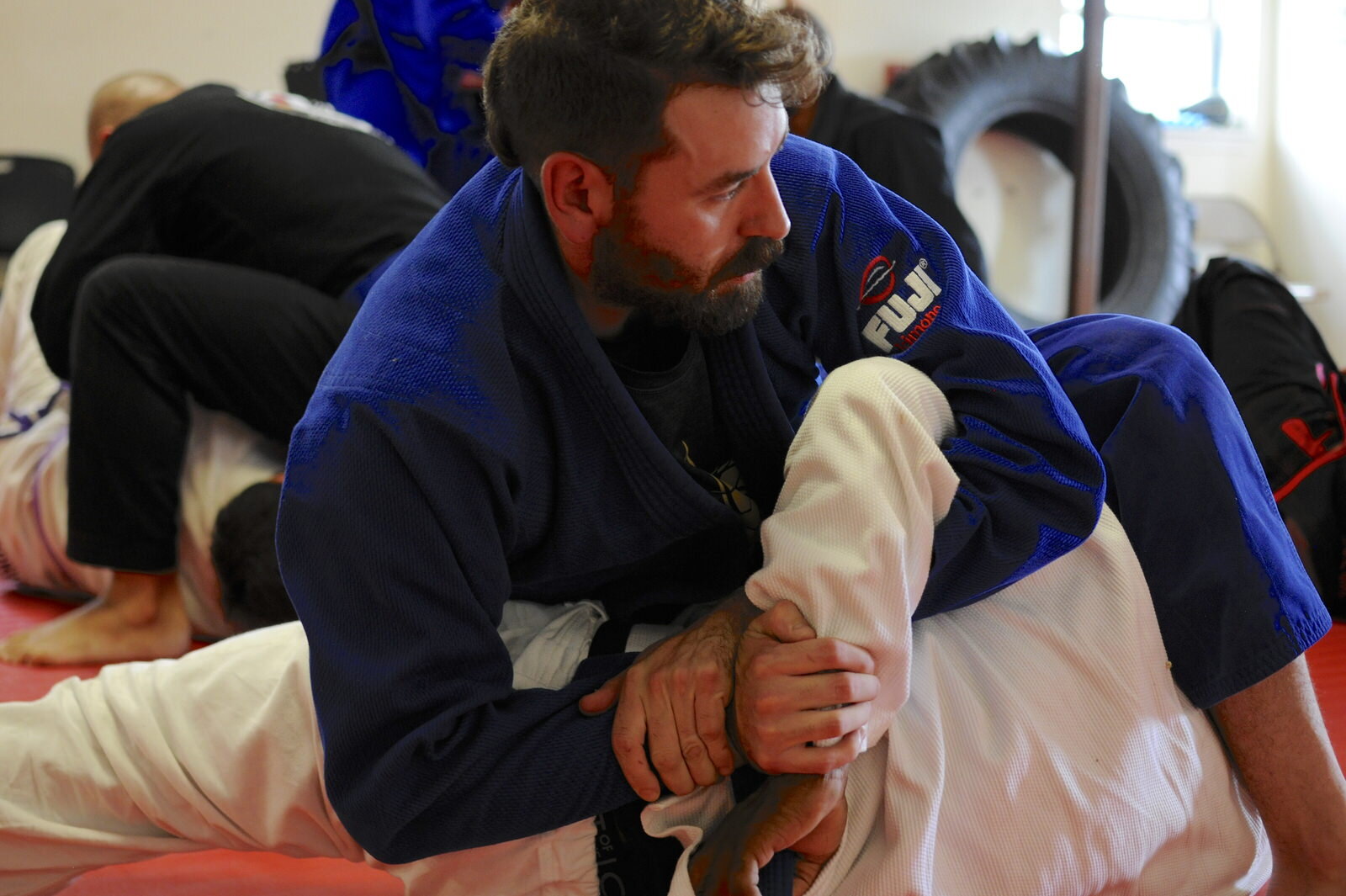9 Ways Gymnastics Can Improve Your Jiu Jitsu Performance [+ Examples]
What comes to mind when I say "gymnastics?" Is it girls flipping on the floor or maybe the balance beam? What about if I say "martial arts" or "jiu jitsu?" My guess would be two men fighting. Or perhaps an image of Bruce Lee.
Either way, it's not hard to imagine the distinctions between the two sports. On the surface, they appear to be opposite in every sense. But, if you take a closer look behind the scenes at the underlying components of fitness, then all of a sudden, there are a lot more similarities. So much so, it could be said that one sport (gymnastics) could be used to enhance the other's performance (jiu jitsu).
Okay, so maybe not the sport in its entirety, but more the principles and approaches gymnastics coaches use when it comes to strength and conditioning. Now, I'm not here to convince martial artists they need to learn how to tumble to grapple better. Instead, I'm here to provide an alternative perspective to training:
The tactics used in gymnastics for athletic development should be adopted by martial artists to become more well-rounded athletes.
And it's not just my bias for gymnastics that leads me to say this (although my years as a competitive gymnast and professional coach do leave me with a unique point of view). But rather, I am motivated by my genuine desire to help fighters reach their potential. Fueled by my passion for science and never-ending quest to better understand human movement, I'm here to combine my background and experiences with one sport to help the athletes of another gain a competitive edge.
A Brief History of Gymnastics
Gymnastics has its roots in ancient Greece, where men would frequently meet at the gymnasia for education and physical training. Over time, the Greeks started the Olympic Games as a symbol of their ambition and as a way to honor the physical prowess of their citizens [7]. When the Romans conquered Greece, they saw gymnastics as a means to create more powerful soldiers, using the sport as a tool for physical conditioning and battle preparation [7].
During the 18th and 19th centuries, many developments in education led to the invention of different apparatuses to set the foundation for what we know today [7]. Modern gymnastics is now a beautiful blend of artistry and fitness, and, as the sport continues to evolve, a formidable display of the athletic capacity of humans.
9 Ways Gymnastics Improves Jiu Jitsu
Gymnastics and jiu jitsu are highly demanding, physically complex sports that are also dynamic and unpredictable. At a fundamental level, both require exceptional degrees of fitness. Conditioning like a gymnast can help develop these abilities in a non-traditional and creative way. Gymnastics primarily uses body weight to develop athletic capabilities, incorporating dynamic and static training and progressions for every movement pattern; this keeps workouts challenging while simultaneously yielding the desired results of generating maximum force throughout a range of motion in all planes [2].
For jiu jitsu practitioners, this approach is ideal. After all, the sport revolves around taking advantage of body mechanics and leveraging body weight and position to defeat opponents.
1. Build Muscular Strength
Like gymnasts, jiu jitsu athletes can benefit from building maximum strength, especially for developing other athletic traits (like power, which we will discuss later). Practitioners push and pull opponents with both the arms and legs. And while applying the proper techniques are undoubtedly a significant part of the sport, possessing muscular strength also helps athletes produce the maximal forces, relative to their body weight, to succeed in both resisted and unresisted situations [4,5]. Sufficient core strength, which is another primary focus in gymnastics, is also crucial for training jiu jitsu. Having a strong core, which goes beyond just having six-pack abs, allows athletes to maintain base and pressure, pass guard, and set up offensive sweeps and submissions [3].
2. Develop Muscular Endurance
Incorporating isometric contractions (where you hold a single position for a set length of time) helps build static strength and muscular endurance while also enhancing joints' abilities to support one's body weight in mechanically inferior or disadvantaged positions. This is all too important for gripping and manipulating an opponent's gi. Including isometric core exercises also aid in maintaining a braced core against pressure while retaining controlled breathing.
3. Develop Explosive Power
Jiu jitsu practitioners, particularly competitors, often perform high-velocity movements. This means having explosive power in situations like takedowns and escapes [4]. While body weight training usually isn't the first thought for building muscular power, it is undeniable that gymnasts are capable of explosive tumbling and vaults. So, they must be doing something right. Power combines muscular strength and speed and is typically trained via plyometric exercises. Elements of gymnastics can also help jiu jitsu practitioners better understand the concept of body tension, which is essential for completing those dynamic techniques efficiently.
4. Build Cardiorespiratory Endurance
Neither gymnastics nor jiu jitsu are technically considered "aerobic sports" due to each activity's intermittent nature. However, it is still important to train cardiovascular fitness. Aerobic conditioning is vital to competition success. It helps buffer the effects of acidosis and other exercise metabolites produced during lower intensity activity [8]. Confused? That's okay. That was just a fancy science way to say that better aerobic fitness helps athletes push through those moments in about when they're tired so they can go stronger, longer.
5. Improve Flexibility
Gymnasts aren't the only athletes who benefit from flexibility. The positions required of jiu jitsu demand a degree of flexibility and joint mobility. Increasing both static and dynamic flexibility improves muscle balance, strength, and an athlete's ability to perform specific maneuvers and counter an opponent's attack [6] Not to mention, improved flexibility helps protect against injuries.
6. Increase Speed, Agility, & Quickness
Jiu jitsu is not just about chokeholds and joint locks but also momentum and timing to achieve advantages and positional control [4,6]. Using gymnastics-inspired movements, practitioners build upon their strength, increasing their ability to exert maximal forces during high-speed movements to control and dominate their opponents [1,6].
7. Develop Stability, Balance, & Postural Control
Gymnastics training focuses heavily on mobility and balance, and so should jiu jitsu. Adding weight to certain exercises builds up connective tissues and increases the stability of joints. Improved mobility and stability necessary as grapplers work to find (and hold) a superior position against an opponent.
8. Develop Spatial & Body Awareness
Gymnastics can be a great tool to develop body and spatial awareness and understand how to engage particular muscle groups at specific times.
9. Reduce Injury Risk & Improve Recovery
Body weight training means less external loading on the joints and muscles, which means connective tissue is exposed to less damage so athletes can continue to roll without the feeling of sore muscles stopping them.
5 Examples of Gymnastics-Inspired Exercises to Get You Started
1. Hollow Hold/Rocks
These are great for building core strength and involve holding the shoulders and legs off the ground at the same time while keeping the lower back in contact with the floor. Beginners can bend the knees to make a 90º angle and keep the arms down by the sides, working their way up to straight legs and straight arms by their ears. Other progressions involve rocking back and forth and performing a V-up, which goes from the hollow to folding in half to touch the toes.
2. L-Sits
Another great isometric core exercise, the L-sit involves holding the body up in an "L" (or pike) position with the legs extended out straight. The L-sit can be held on dumbbells or kettlebells to provide more space for the legs, flat on the floor, or on a pair of rings, which adds another element of instability. To add a dynamic component to the L-sit, athletes can bend the knees into a tuck position and go from tuck to pike in a slow manner for the desired repetitions.
3. Stalder Lifts
Stalder lifts target the lower abdominal muscles, hip flexors, and quads. There are several variations, but all involve lifting the legs off the floor while keeping the hands in contact with the floor. Stalder lifts can be performed while sitting in a straddle position or a pike, as well as one leg at a time.
4. Rope Climbs
Climbing the rope is all about the upper body, but it is also a phenomenal way to build hand and grip strength. The goal is to (eventually) climb without the legs for a pure upper body workout.
5. Handstands
Handstands are the quintessential gymnastics move. They're also a great way to target the upper body while improving body tension, body awareness, and spatial awareness. You think you know the world around you, that is until you see it upside down.
Conditioning Like a Gymnast Makes a Better Jiu Jitsu Practitioner
Am I saying that jiu jitsu practitioners should go out and sign up for a gymnastics class? Not necessarily. Nor am I saying that training like a gymnast is the best approach to strength and conditioning for grapplers.
Am I saying it will benefit jiu jitsu athletes to incorporate gymnastics-inspired exercises? Absolutely.
Gymnastics takes a unique approach to strength and conditioning, not just in the predominant use of body weight exercises but also in the emphasis on stabilizing joints, addressing movement patterns, and incorporating flexibility while still taking into consideration actual practice itself. Add that up, and you have a lot of demand on a body.
Jiu jitsu is strikingly similar in this respect. However, many grapplers look to training through a fixed lens. All the traditional approaches to strength and conditioning- weightlifting, Olympic lifts, running, etc.- definitely have their place in a program. But they can also be limited in what they achieve as well as bring a lot of wear and tear to the body when technical practices are thrown into the mix.
So, grapplers, start looking at your strength and conditioning from a new perspective. It may surprise you just how much those gymnastics moves improve your jiu jitsu performance. After all, if it's good enough for George St. Pierre... I'm just saying.
References
[1] Brown, L. E., & Ferrigno, V. A. (2015). Training for speed, agility, and quickness (3rd ed.). Champaign, IL: Human Kinetics.
[2] Dzabirski, O. (2017, December 3). Use gymnastics to become freakishly strong for BJJ. BJJ World. https://bjj-world.com/use-gymnastics-to-become-strong/
[3] Fernandez, J. (2020, March 31). The best science-backed strength and conditioning workouts for BJJ. BJJ Success. https://bjjsuccess.com/best-strength-and-conditioning-workouts-for-bjj
[4] Jones, N. B., & Ledford, E. (2012). Strength and conditioning for Brazilian jiu-jitsu. Strength and Conditioning Journal, 34(2), 60-69.
[5] Øvretveit, K. (2018). Anthropometric and physiological characteristics of Brazilian jiu-jitsu athletes. Journal of Strength and Conditioning Research, 32(4), 997-1004.
[6] Ratamess, N. A. (2011). Strength and conditioning for grappling sports. Strength and Conditioning Journal, 33(6), 18-24.
[7] Sands, B., & Conklin, M. (1984). Everybody’s gymnastics book. New York, NY: Charles Scribner’s Sons.
[8] Yates, J. M. P. (2017). Brazilian jiu jitsu: Considerations for strength and conditioning training plan design. Journal of Australian Strength and Conditioning, 25(4), 46-53.



